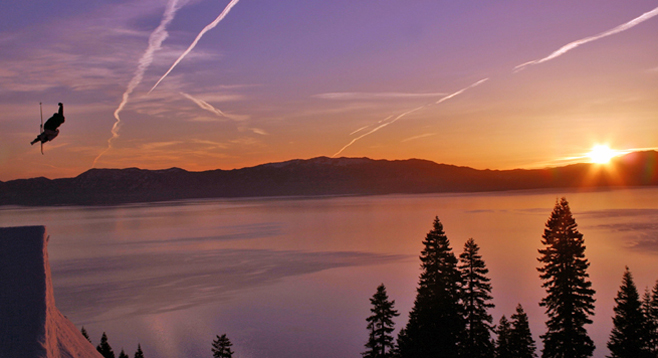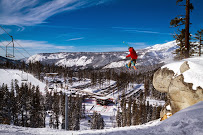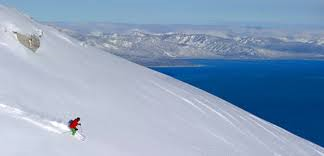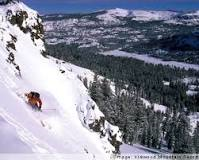(246) South Lake Tahoe
Phone: (530) 539-9500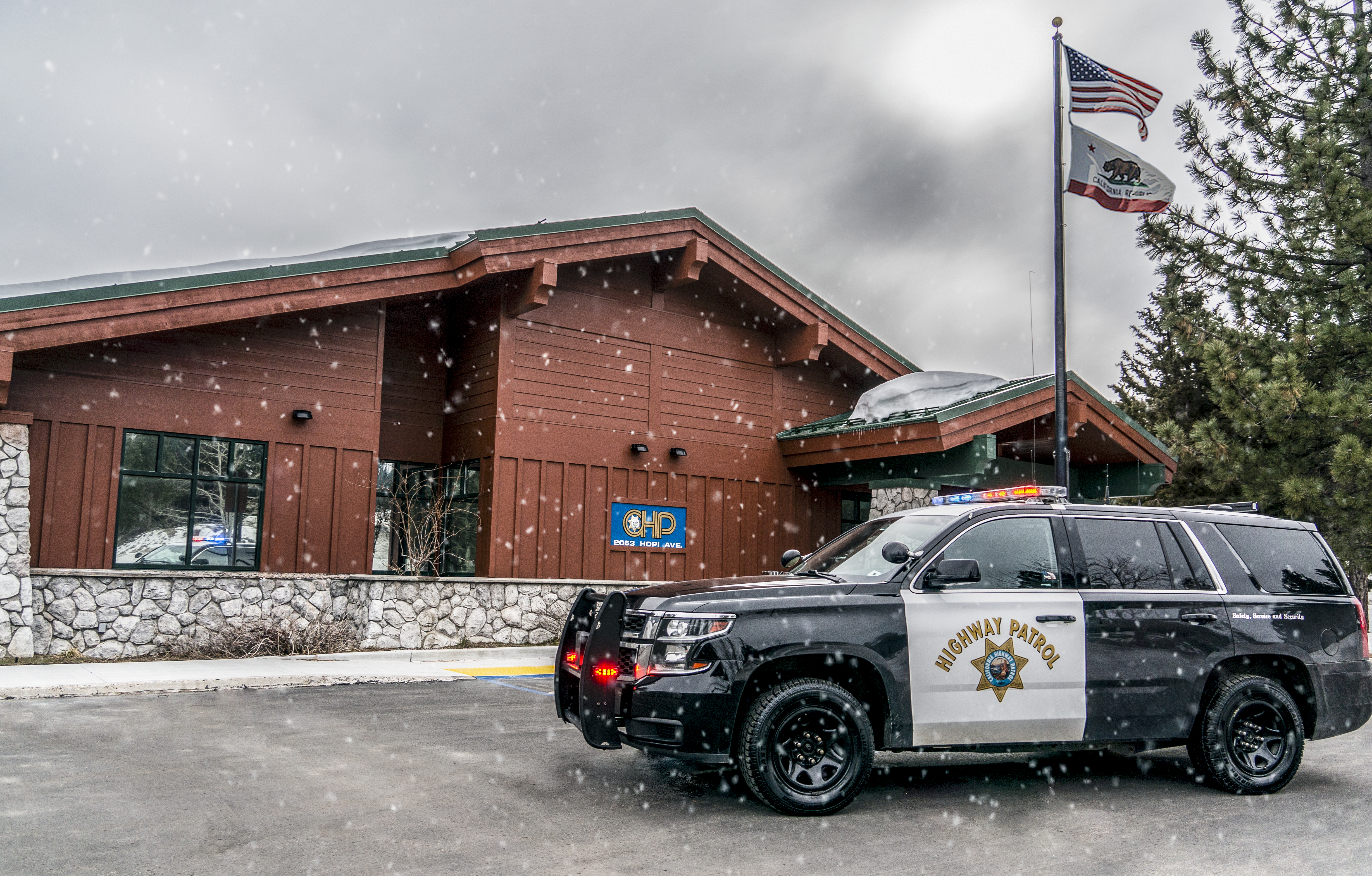
Address:
2063 Hopi Avenue
South Lake Tahoe, CA 96150
The California Highway Patrol’s South Lake Tahoe Area is staffed with one lieutenant commander, three sergeants, twenty officers, two civilian clerical staff, one civilian automotive technician and one civilian part-time maintenance worker. The CHP South Lake Tahoe Area has primary responsibiliy for traffic enforcement and the investigation of traffic related incidents on one United States Highway, three California State Routes, and all of eastern unincorporated El Dorado and Alpine County.
While the CHP South Lake Tahoe Area is home to approximately 20,000 full-time residents, the population with weekend and holiday tourism can increase to over 100,000 people. South Lake Tahoe (Elev. 6,223’) is a unique geographical area. Lake Tahoe is the second largest and the deepest alpine lake in the world. At 22 miles long, 12 miles wide and a depth of 1,645’, Lake Tahoe holds enough water to cover the State of California in 14” of water. Lake Tahoe’s weather is unpredictable as snow has fallen in every month of the year with temperatures ranging from -28° in the winter to 99° in the summer. Average rainfall is minimal while annual snowfall ranges from 125 inches to 500 inches. The main economy base of South Lake Tahoe is tourism.
AREA COMMANDER
Lieutenant Derek J. Crangle
SCHOOL BUS OFFICER
& COURT LIAISON
Officer Mike Brown
mibrown@chp.ca.gov
EL DORADO & ALPINE COUNTY COURT INFORMATION
CRIMINAL/CIVIL DIVISION
TRAFFIC/SMALL CLAIMS DIVISION
1354 Johnson Blvd, Ste. 2
South Lake Tahoe, CA 96150
(530) 573-3044
ALPINE COUNTY SUPERIOR COURT
14777 State Route 89
P.O. Box 518
Markleeville, CA 96120
(530) 694-2113
www.alpine.courts.ca.gov
Local Ski Resort Information
FAQ
VIN Verification
-
How do I get a VIN inspection/verification?
You must take your vehicle to a DMV office to start the registration process. The DMV will conduct a VIN inspection/verification, if needed. If there is an issue with the VIN inspection/verification, the DMV will give you a referral in the form of Pending Registration to go to a CHP office. You must call a CHP area office for an appointment. If you do not have this referral, you will be sent to the DMV.
An appointment is required, and certain documents must be brought to the appointment by the vehicle owner. The vehicle must be brought to the CHP area office.
Call your local CHP Area office to obtain further details and schudule an appointment.
-
How do I get a copy of crash report in which I was involved?
Traffic Crash Reports are available to be picked up at any CHP office during normal business hours. To receive a copy of a report, you must be an involved party, passenger, property owner, or licensed insurance agent (with a signed release from your insured, an involved party). There is a fee for the crash report (cash or check), so contact your local area office for the exact amount. Call the CHP office overseeing the crash investigation ahead of time to see if your traffic crash report is available for pick up.
You can also visit the following website to obtain your crash report: CHP | Crash Report Search
If you are making a request for a crash report by mail, please fill out a CHP 190 (Application for Release of Information) form. The form and directions for completing the CHP 190 can be found here: Request a Crash Report and CHP 190 The form contains areas to fill out information and is available in both English and Spanish.” Remember to include a copy of your CHP 418 (Crash Report Information) card and a copy of your valid driver license.
Driving
-
What are the current road conditions?
Please visit http://www.dot.ca.gov/ for more information on the road conditions where you are headed.
Click on http://www.dot.ca.gov/hq/roadinfo/ChainRequire.pdf for information about chain requirements.
-
What are the mandatory dates commercial vehicles must carry chains?
There are no statutory dates that require carrying of chains on commercial vehicles; however, it is advisable to carry chains from November through April. Please see the links above under Caltrans Road Information Links, or click the following link: Truck Chain Requirements | Caltranss, for more information regarding chain requirements.
-
What phone number can I call if my vehicle breaks down on the freeway?
If your vehicle is disabled in the traffic lanes or a dangerous location, call 9-1-1. Otherwise, in metropolitan areas, call 5-1-1 and say “Roadside Assistance” to be connected to an operator that will assist you with obtaining appropriate roadside assistance, including Freeway Service Patrol (FSP).
Otherwise, contact a local towing agency.
South Lake Tahoe
-
How do I get a Brake & Lamp Inspection?
Visit the California Department of Motor Vehicle website for locations and more information at Smog Brake/ Lamp - California DMV
-
How do I report a non-emergency situation?
Call 1-800-TELL-CHP to report anything not requiring an emergency response.
-
Can I call 911 to report a drunk driver?
Absolutely! Drunk drivers pose a serious danger to the public. Even if you think they may be sleepy, call 911. A sleepy driver can be just as dangerous as a drunk driver. If there is an officer nearby, they might be able to find and make a traffic stop on the vehicle.
-
Can I park where there are “NO PARKING” or “NO STOPPING” signs posted?
No! Absolutely not! Be aware of where you can and cannot park. Look for posted signs. Also, do not park along the road where any part of your vehicle, including mirrors, load, etc., extends to the left of the painted white fog line. In both instances, your vehicle may be towed. In case you’re wondering, “no stopping” and “no parking” are the same thing with regards to signs and the law.
-
Is there a certain time of the year when I can have studs on my tires?
Yes. You can only have studs on your tires between November 1 and April 30 of each year (27454(e)(1) CVC). In snowy climates, people often have two sets of tires mounted on rims to make it easy to switch between regular tires and studded tires.
-
What do I do when I have to drive through a traffic circle (aka roundabout)?
Slow down as you approach the roundabout and pay attention to posted signs. Always stay to the right of any medians, barriers, or divided sections; do not drive to the left. Traffic not yet in the roundabout must yield to any traffic in the roundabout close enough to be a hazard; this would be traffic to your left. If you are already in the roundabout, keep moving; do not slow or stop to allow other traffic into the roundabout. Give turn signals to let other drivers know which way you are going.
-
Am I required to pass a bicycle going in the same direction by 3 feet or more?
In general, yes. If there is an open lane to the left in the same direction, you should safely move into this other lane. If there is only one lane in the same direction, and you cannot pass by more than 3 feet due to traffic, road conditions, etc., you need to slow to a reasonable speed to pass the bicycle. Refer to CVC section 21760. Nothing in 21760 CVC says that you are allowed to violate any other provision of law (crossing double yellow lines, etc.) to pass a bicycle by 3 feet or more.
-
Which way am I supposed to ride my bicycle on the road?
Bicycles are required to be operated in the same direction as cars, trucks, etc.; in other words, on the right half of the highway, including shoulders (21650.1 CVC). If there is a bicycle lane on the road, bicycles are required to be ridden in the bicycle lane (21208(a) CVC). Bicycles shall be operated to the right edge/curb of the roadway if going slower than other traffic (21202(a) CVC). Also, bicyclists should remember if they leave the lane and go onto the shoulder (right of the white line), they have left the roadway. The bicyclist must now re-enter traffic when it’s safe and not violate the right-of-way of any other vehicles; look back to check for traffic.
-
Are bicycle riders required to stop for stops signs or red lights?
YES! Bicyclists are required to follow the rules of the road which include coming to a full stop for stops signs, red lights, etc.
-
What kinds of electric bicycles are there?
There are 3 classes of electric bicycles. Electric bicycles are bicycles equipped with operable pedals and assisted by an electric motor of less than 750 watts.
- A “class 1 electric bicycle” provides electric assistance only when the rider is pedaling, but ceases to provide assistance when the electric bicycle reaches 20 miles per hour (MPH).
- A “class 2 electric bicycle” may be run solely off the electric motor, but ceases to provide power when the electric bicycle reaches 20 MPH.
- A “class 3 electric bicycle” provides electric assistance only when the rider is pedaling, but ceases to provide assistance when the electric bicycle reaches 28 MPH (CVC Section 312.5).
An “electric bicycle” operated, or equipped to operate, outside of these definitions can be considered motorcycles; therefore, they would have to follow all laws with regards to motorcycles (licensing, registration, equipment, operation, etc.).
-
What are the laws governing the use of motorized scooters (includes electric scooters)?
The operation of motorized scooters can be found in the California Veghciel Code (CVC) under sections 21235, 21221.5, and 22411, to list a few. Here are some of the laws. Motorized scooters operators:
- Are required to operate it with a brake (21235(a) CVC).
- Cannot ride on a road with a speed limit over 25 mph unless there is a Class II or IV bike lane (21235(b) CVC).
- Cannot ride without wearing a bicycle helmet for riders under 18 years old (21235(c) CVC).
- Must have a valid driver’s license (21235(d) CVC).
- Cannot ride with passengers (21235(e) CVC).
- Cannot carry items that prevent the rider form having at least one hand on the handlebars.(21235(f) CVC).
- Cannot ride on sidewalks (21235(g) CVC).
- Cannot leave the scooter on a sidewalk in such a manner that does not leave an adequate path for pedestrians.(21235(i) CVC).
- Cannot attach themselves to other vehicles by any means (rope, chain, etc.) (21235(j) CVC).
- Cannot ride the scooter in excess of 15 mph (22411 CVC).
- Cannot ride the scooter while under the influence of alcohol or drugs or both (21221.5 CVC).
- Shall ride within an established bike lane on roads (21229(a) CVC).
- Shall ride in the same direction as motor vehicle traffic (21650.1 CVC).

